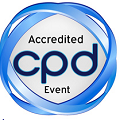Chris D. Geddes
Director of the Institute of Fluorescence, USA
Title: Lyse-It - A rapid 30 second transformational lysing and DNA fragmentation technology
Biography
Biography: Chris D. Geddes
Abstract
There is a long-standing need for rapid and sensitive detection platforms, including point-of-care tests, for a variety of
viruses and bacteria. While many technologies such as PCR and others, have the potential to provide results in under
30 minutes, pathogen identifi cation on these platforms actually takes many hours to complete, mostly due to the upfront
sample preparation, or specifi cally, sample cell lysis. Lysis, the process by which a bacteria or virus is “opened-up” to release
its genetic material, is crucial for its detection / identifi cation, and is typically undertaken by adding a chemical cocktail to
the sample (lysis buff er) accompanied by heating. Th is process takes several hours to complete and oft en involves expensive
lysis buff ers. Even in non-diagnostic settings such as in research laboratories, lysis is still cumbersomely performed by a
great number of researchers using the age-old lysing buff er technology. Consequently, Professor Geddes at the Institute of
Fluorescence has developed a rapid solution to this age-old problem, Lyse-It®, which has the potential to impact signifi cantly
both diagnostic and research settings. Focused microwaves in small disposable sample chambers readily allow the user to
lyse cellular samples with near-100% effi ciency, within 20 seconds on a single platform at a cost less than other technologies
available today. Importantly, this lysing approach is generic to a wide range of cells and viruses, i.e., is a single platform (one
size fi ts all), unlike traditional lysing buff er approaches that all use multiple kits for diff erent media. In addition, within this 30
second step, DNA / RNA can be fragmented into tunable bp-fragment sizes, ideal for amplifi cation and detection.

